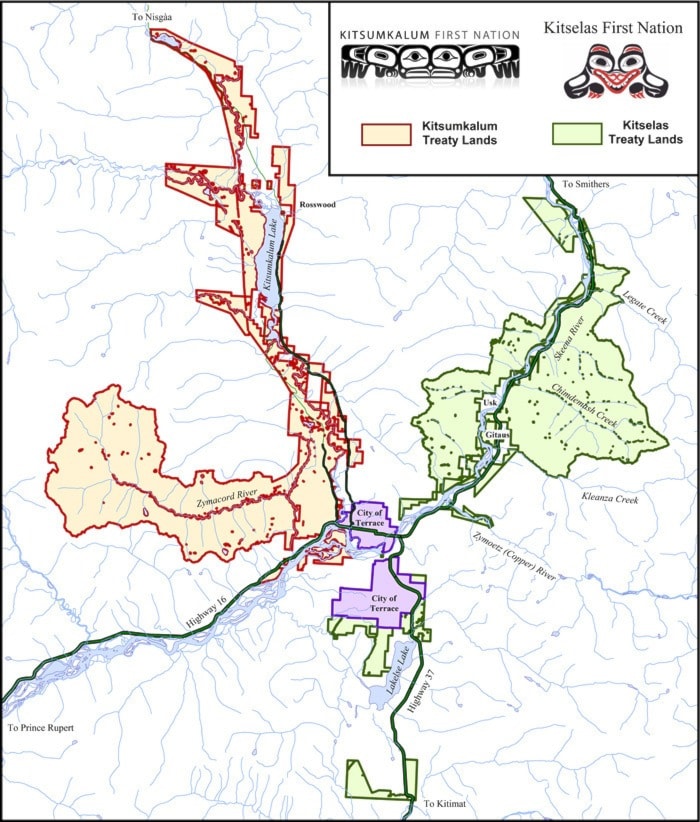THE Kitsumkalum First Nation stands to receive more than $40 million and the Kitselas First Nation more than $30 million and each will receive thousands of hectares around Terrace, according to documents released today.
The documents take the form of a draft or preliminary agreement in principle for each First Nation and will, if approved, pave the way to negotiations for final treaty settlements.
Each First Nation will also receive substantial self-governing powers over lands and resources and services such as health care and education.
“This will be a huge benefit to the City of Terrace and to the region,” said Gerald Wesley, the chief treaty negotiator for the Kitsumkalum and Kitselas, of the certainty for economic and social development that will come from final settlements.
He encouraged residents of the area to read and understand details of the two draft agreements.
Final treaty agreements for the Kitselas and Kitsumkalum would, when taken together with the Nisga’a treaty of 2000, provide certainty for economic development on a level not seen elsewhere in the province.
The lack of land ownership clarity in B.C. stemming from unresolved aboriginal rights and title has long been regarded as a hindrance to investors.
But much work still needs to be done leading to final agreements, cautioned Wesley and others involved in negotiations which so far have taken 15 years of actual talks.
The draft agreements in principle released this week will now be reviewed by government officials before being initialed as complete.
Members of the two First Nations must then approve of the agreements in community votes to be held next February. If passed by Kitsumkalum on Feb. 23, 2013 and Kitselas on Feb. 24, 2013, the agreements will then be approved by the federal and provincial governments, enabling negotiators to start on final agreements.
A rejection by one First Nation of its agreement in principle does not affect the agreement of the other if it is approved.
Kitsumkalum and Kitselas members will again be asked to approve of final agreements in separate votes and the agreements must receive legislative consent by B.C. and Canada.
Wesley said it could be three to five years yet before final settlements are concluded once agreements in principle are approved. “We can always hope it’s less than that, but it’s probably two years at a bare minimum,” he said.
And although the draft agreements in principle contain the essential elements of final agreements, there still might be changes as negotiations proceed.
The land, 45,406.3 hectares or 454 square miles for Kitsumkalum and 36,158.7 hectares or 362 square miles for Kitselas, comes from the provincial Crown and does not involve private land holdings.
Under treaty negotiations principles in BC, the province is responsible for land and resource elements while the federal government provides the cash which works out to $44.2 million for Kitsumkalum and $34.7 million for Kitselas.
